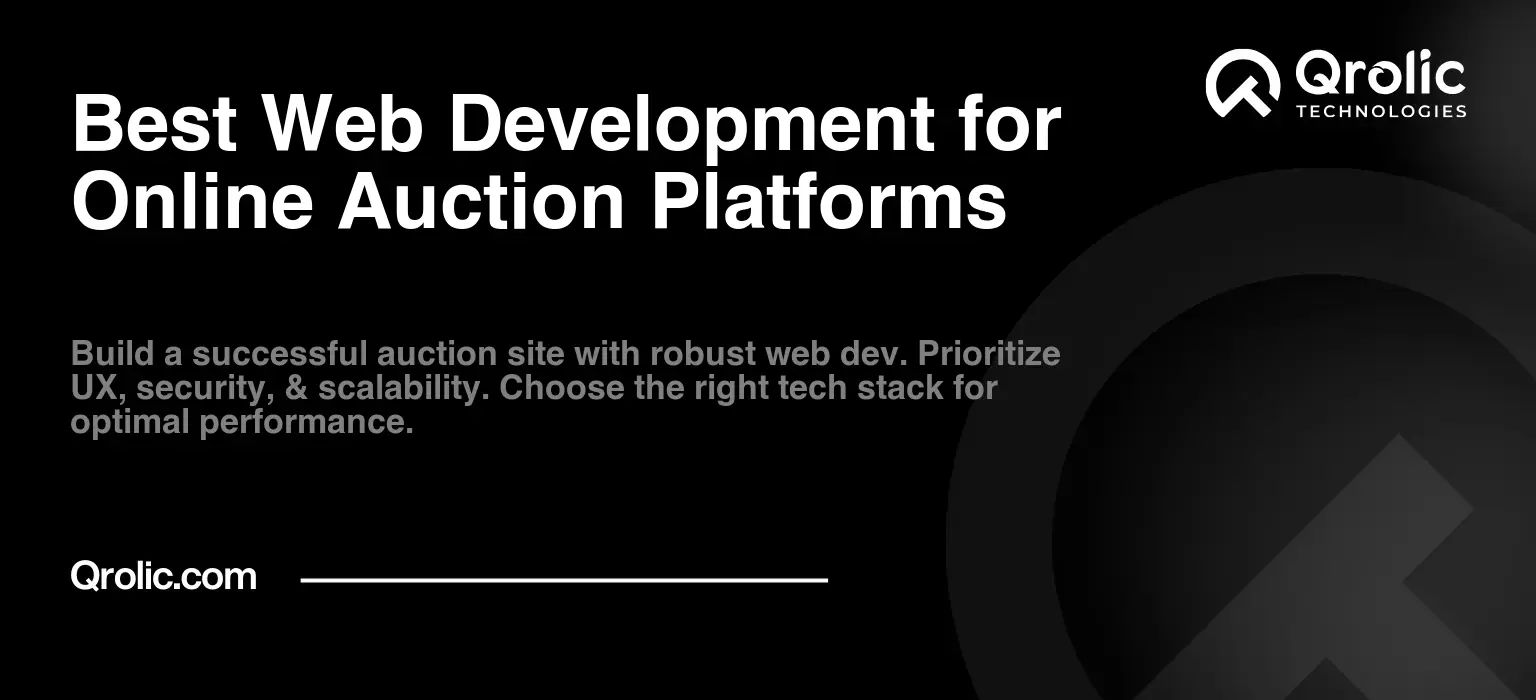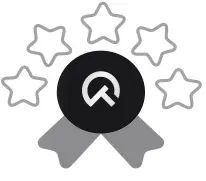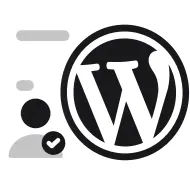Building a successful online auction platform requires more than just a good idea; it demands a robust, user-friendly, and secure foundation. Web development is the backbone of any thriving online auction site, and choosing the right approach can make or break your venture. Let’s delve into the intricacies of crafting the best web development strategy for your online auction platform.
Quick Summary:
- Quality web development ensures auction success.
- Prioritize user experience, security, and scalability.
- Include robust features like real-time bidding.
- Follow a systematic process with the right tech.
Table of Contents
- Why Invest in High-Quality Web Development for Auction Platforms?
- Key Web Development Features for Successful Online Auction Platforms
- Robust User Management System
- Comprehensive Item Listing Management
- Advanced Bidding Functionality
- Secure Payment Gateway Integration
- Robust Search and Filtering System
- Communication and Notification Features
- Mobile-First Approach and Responsive Design
- Scalable Infrastructure and Performance Optimization
- The Technology Stack: Choosing the Right Tools
- Front-End Development
- Back-End Development
- Database
- Other Tools and Technologies
- Step-by-Step Process of Web Development for Online Auction Platforms
- Benefits of a Professionally Developed Auction Platform
- Qrolic Technologies: Your Partner in Auction Platform Development
- Conclusion
Why Invest in High-Quality Web Development for Auction Platforms?
The success of an online auction platform hinges on a seamless user experience. Imagine trying to bid on a rare antique, only to find the website lagging or the bidding process confusing. Frustration quickly sets in, driving potential customers away. High-quality web development is the shield against such scenarios, ensuring that your platform is not only functional but also delightful to use.
-
User Experience (UX) is Paramount: A well-developed platform boasts intuitive navigation, a clear bidding process, and a responsive design that adapts to various devices. This positive UX translates to increased engagement, more bids, and higher profits.
-
Security is Non-Negotiable: Auction platforms handle sensitive financial and personal information. Robust security measures, a core component of good web development, are critical to safeguarding user data and building trust. Think about the damage a security breach can do to your reputation and brand!
-
Scalability for Growth: As your auction platform grows, so will its traffic and data. A well-engineered platform, built with scalability in mind, ensures seamless operation even under heavy loads. You don’t want your platform to crash during peak auction times.
-
Competitive Advantage: In a crowded market, a professionally developed platform can be a key differentiator. A user-friendly interface, coupled with unique features, can give you a significant edge over competitors.
-
Mobile Optimization is Essential: With the majority of users accessing the internet via smartphones, a mobile-optimized auction platform is no longer optional; it’s a necessity. Responsive design and fast loading times on mobile devices are crucial.
Key Web Development Features for Successful Online Auction Platforms
Let’s break down the essential features that contribute to a successful online auction platform, focusing on web development aspects.
Robust User Management System
- Secure Registration and Login: A secure user management system is fundamental for any online platform. It should include strong password policies, email verification, and social login options for user convenience. Think of it as the gatekeeper to your platform.
- User Profiles and Dashboards: Each user should have a personal profile to manage their bidding activities, favorite items, and communication preferences. A well-structured dashboard allows users to track their bids, invoices, and account information efficiently.
- Role-Based Access Control: Differentiate between sellers, bidders, administrators, and other roles with defined permissions. This ensures that users only have access to the functionalities relevant to their role. This is important for security and streamlined administration.
Comprehensive Item Listing Management
- Easy-to-Use Listing Creation Interface: Sellers should be able to list items quickly and easily, with options to upload high-quality images and provide detailed descriptions. The interface should be intuitive and accessible to users of all technical levels.
- Categorization and Filtering Options: Allow users to easily browse and filter items based on category, price range, keywords, and other relevant criteria. Effective filtering simplifies the search process and enhances the user experience.
- Image and Video Support: High-quality images and videos are essential for showcasing items. Implement features that allow sellers to upload multiple images and videos to provide a comprehensive view of their offerings.
- Detailed Item Descriptions and Specifications: Provide fields for detailed item descriptions, including material, condition, origin, and other relevant specifications. The more information provided, the easier it is for potential buyers to make informed bids.
Advanced Bidding Functionality
- Different Auction Types (e.g., Standard, Dutch, Reserve): Support various auction types to cater to different seller preferences and item characteristics. Flexibility in auction types will attract a wider range of sellers.
- Real-Time Bidding Updates: Implement a system that provides real-time bidding updates, keeping users informed of the latest bid prices and ensuring fair competition. This is vital for maintaining user engagement and fairness.
- Proxy Bidding: Allow users to set maximum bids, and the system will automatically place bids on their behalf, up to the specified limit. This feature is popular among bidders and encourages higher participation.
- Sniping Prevention: Implement measures to prevent sniping (bidding at the very last second) to ensure a fair bidding process. This will encourage more active and earlier bids.
- Bid History Tracking: Provide a clear and transparent bid history, allowing users to track past bids and monitor the bidding process for transparency. This is important for trust and credibility.
Secure Payment Gateway Integration
- Multiple Payment Options: Integrate with multiple secure payment gateways to offer users various payment options, such as credit cards, debit cards, and PayPal. This flexibility will appeal to a wider range of users.
- Secure Transaction Processing: Ensure that all payment transactions are processed securely, using industry-standard encryption protocols and security measures to protect sensitive financial information.
- Invoice Generation and Management: Automate the generation of invoices and facilitate easy payment management for both sellers and buyers. This will streamline financial operations and reduce manual work.
Robust Search and Filtering System
- Advanced Search Functionality: Allow users to search for items using keywords, categories, and other relevant criteria. The search function should be efficient and provide accurate results.
- Filtering Options: Provide robust filtering options to allow users to narrow down their search results based on price, condition, location, and other relevant criteria. This will help users quickly find what they are looking for.
- Tagging and Metadata: Implement a tagging system that allows users to tag items with relevant keywords, improving searchability and discoverability. This will greatly improve the search experience for users.
Communication and Notification Features
- Real-Time Notifications: Implement a system that sends real-time notifications to users about new bids, winning bids, outbid alerts, and other relevant updates. These instant notifications keep users engaged and informed.
- Messaging System: Provide a messaging system that allows buyers and sellers to communicate privately, clarifying doubts and facilitating smooth transactions. Communication fosters trust and ensures a smoother experience.
- Email Integration: Integrate with email systems to send out notifications, alerts, and newsletters to users. Email is a powerful tool for keeping users informed and engaged.
Mobile-First Approach and Responsive Design
- Mobile-Friendly Layout: Ensure that your platform is fully responsive and adapts seamlessly to various devices, including smartphones, tablets, and desktops. This is vital for catering to the growing number of mobile users.
- Fast Loading Times: Optimize your platform for fast loading times on all devices. slow loading times can lead to high bounce rates and loss of potential customers.
- Touch-Friendly Interactions: Design user interface elements that are easy to interact with on touchscreen devices, such as buttons, navigation menus, and form fields. User experience is paramount when it comes to mobile interactions.
Scalable Infrastructure and Performance Optimization
- Cloud Hosting: Utilize cloud hosting solutions like AWS or Google Cloud to ensure scalability and reliability. Cloud hosting will give you the resources to handle any traffic spike.
- Database Optimization: Optimize your database performance to ensure fast data retrieval and storage. This will enhance the speed and efficiency of the auction platform.
- Caching Mechanisms: Implement caching mechanisms to reduce server load and improve page loading speeds. This will result in a smoother experience for users.
- Content Delivery Network (CDN): Use a CDN to deliver static content quickly to users located around the world. This ensures that users around the world can access your platform quickly.
The Technology Stack: Choosing the Right Tools
Selecting the right technology stack is a crucial step in developing a robust and scalable online auction platform. The choice depends on various factors, including the project requirements, budget, and team expertise. Here’s a look at some popular choices:
Front-End Development
- React, Angular, or Vue.js: These are popular JavaScript frameworks for building interactive and dynamic user interfaces. They offer component-based architecture, making it easier to manage and scale the front-end code.
- HTML, CSS, and JavaScript: These are the core technologies for web development, used to structure content, style the user interface, and add interactivity. It’s important to use up-to-date practices.
- Responsive CSS Frameworks (e.g., Bootstrap, Tailwind CSS): These frameworks simplify the process of creating responsive layouts that adapt to various screen sizes.
Back-End Development
- Node.js: A popular choice for building scalable and real-time applications, especially good for real-time bidding functionality, due to its asynchronous nature.
- Python (with Django or Flask): A versatile language that is well-suited for web development and data analysis. Django and Flask are two popular Python frameworks.
- PHP (with Laravel or Symfony): A widely used language for web development, with robust frameworks like Laravel and Symfony.
- Ruby on Rails: Another mature framework that prioritizes rapid development. This is a great choice if time is a factor.
- Java (with Spring Boot): A powerful language for building scalable enterprise applications. Spring boot offers a lot of built in support for security, database access and other enterprise-level features.
Database
- MySQL, PostgreSQL: Relational database management systems that are reliable and scalable. They are popular for managing structured data, including user information, bids and auction information.
- MongoDB: A NoSQL database that is suitable for storing unstructured data and offers flexibility in data modeling. It’s a good choice if you require scalability and flexibility.
- Redis or Memcached: In-memory data stores used for caching to improve the performance of the application. They offer very fast read and write access, which makes them suitable for caching data.
Other Tools and Technologies
- WebSockets: For implementing real-time features like bidding updates and chat functionality.
- API Gateways: For managing and securing APIs that power the auction platform. API Gateways ensure security, routing, and monitoring.
- Load Balancers: For distributing traffic across multiple servers to ensure high availability and scalability.
- Caching Services: To speed up the loading of website pages by storing frequently accessed data.
- Security Tools: For protecting the platform against various attacks, including DDoS, SQL injection, and XSS.
Step-by-Step Process of Web Development for Online Auction Platforms
Developing an online auction platform is a complex project that requires a systematic approach. Here’s a step-by-step guide to help you through the process:
Planning and Requirements Gathering:
- Define Scope and Objectives: Clearly define the goals, functionalities, and target audience for your auction platform. What is the core functionality you want to offer?
- Conduct Market Research: Analyze competitor platforms and understand market trends. This will give you a solid understanding of what you need to do to differentiate yourself.
- Gather Detailed Requirements: Document all the necessary features, functionalities, and user flows. This document will serve as a reference during development.
Design and Prototyping:
- Create Wireframes and Mockups: Design the structure and layout of the platform. This is important for determining how to best present information to the end user.
- Develop UI/UX Prototypes: Design an interactive prototype that simulates the user experience and visual appearance of the platform. User experience is crucial for creating an enjoyable product.
- Get Feedback and Refine Designs: Gather feedback on your prototypes and refine the design based on user input. Feedback is crucial to creating a product that users will enjoy.
Front-End Development:
- Implement the User Interface: Convert the UI/UX designs into functional HTML, CSS, and JavaScript code. This is where the user-facing aspects of the platform come to life.
- Integrate with Back-End APIs: Connect the front-end with the back-end APIs to fetch and display data dynamically. The API is the way that the front and back of the website communicate with each other.
- Implement Responsive Design: Ensure that the platform is responsive and adapts to different screen sizes. The platform should be usable on every device, regardless of the device.
Back-End Development:
- Set Up the Database: Design and implement the database schema to store auction data, user information, and other relevant data. Database design is the foundation of any data-driven application.
- Develop the Application Logic: Implement the application logic for managing auctions, bids, payments, user accounts, and other functionalities. This is the engine that drives the platform, so this step is critical.
- Implement APIs: Create RESTful APIs that the front-end can use to communicate with the back-end. These APIs will be the channels for data flow within the platform.
- Security Implementation: Implement robust security measures, including input validation, authentication, and authorization. This step will protect your data and users from malicious attacks.
Testing and Quality Assurance:
- Functional Testing: Test all features and functionalities thoroughly to ensure they work as expected. No feature should be left untested, to ensure that users have a seamless experience.
- Usability Testing: Conduct user testing to ensure the platform is user-friendly and easy to navigate. Testing will help find areas where the platform is difficult for a user.
- Security Testing: Perform security testing to identify and fix vulnerabilities. Protecting the platform and users against any attacks is critical.
- Performance Testing: Conduct performance testing to ensure the platform can handle the expected load. Testing before go-live will prevent problems as the platform grows.
Deployment and Maintenance:
- Deploy the Platform to a Production Environment: Deploy the platform to a server environment that can handle the traffic and scale with growth.
- Monitor and Maintain: Continuously monitor the platform for performance issues and bugs, and address them promptly. Monitoring and maintenance is essential to keeping the platform running as intended.
- Release Regular Updates: Release regular updates to fix bugs, improve performance, and add new features. It’s important to keep the platform up to date as user requirements and technology change.
Benefits of a Professionally Developed Auction Platform
Investing in professional web development for your online auction platform provides numerous long-term benefits:
- Enhanced User Experience: A well-designed and intuitive platform will provide users with a seamless and enjoyable experience, leading to higher engagement and more bids.
- Improved Security: Robust security measures will protect sensitive user data and build trust, minimizing the risk of security breaches and data leaks.
- Increased Scalability: A professionally developed platform, built with scalability in mind, will be able to handle growth in traffic and data, ensuring smooth operation during peak periods.
- Higher Conversion Rates: A well-optimized platform will encourage users to bid and complete transactions, leading to higher conversion rates and increased revenue.
- Competitive Advantage: A professionally developed platform will set you apart from competitors, providing a unique and compelling experience for users.
- Reduced Maintenance Costs: While the initial investment may be higher, a well-engineered platform will require less maintenance and reduce downtime in the long run.
- Increased Brand Credibility: A professional and user-friendly platform will enhance your brand image, demonstrating expertise and reliability.
Qrolic Technologies: Your Partner in Auction Platform Development
Qrolic Technologies understands the complexities of building a successful online auction platform. We offer comprehensive web development services tailored to your specific needs and goals. Our expertise covers:
- Custom Development: We build bespoke auction platforms that meet your unique requirements and business goals.
- Front-End & Back-End Expertise: Our team comprises skilled front-end and back-end developers proficient in various technologies.
- UI/UX Design: We create intuitive user interfaces that enhance the user experience and promote engagement.
- Payment Gateway Integration: We integrate secure payment gateways that allow for seamless and secure financial transactions.
- Security & Scalability: We ensure the security and scalability of your platform, protecting it from cyber threats and preparing it for future growth.
- Ongoing Maintenance: We provide continuous maintenance and support to ensure that your platform runs smoothly and efficiently.
- Mobile-First Development: We prioritize a mobile-first approach, ensuring that your platform is fully responsive and user-friendly on all devices.
At Qrolic Technologies, we work closely with our clients throughout the development process, from initial planning to launch and beyond. We are committed to delivering high-quality, innovative, and scalable solutions that help our clients achieve their business goals. Visit our website at https://qrolic.com/ to learn more about how we can help you bring your online auction platform vision to life. Our commitment to innovation and client satisfaction makes us the perfect partner for your next web development project.
Conclusion
Developing a successful online auction platform requires careful planning, meticulous execution, and a deep understanding of user needs. By prioritizing user experience, security, scalability, and a robust technology stack, you can create a platform that not only meets the needs of your users but also drives growth and profitability. Choosing the right web development partner is critical to achieving your goals and we hope this guide has provided you with all the information you need to make informed decisions. Remember that the world of online auctions is dynamic, so it’s essential to build a platform that is flexible, scalable, and able to adapt to the ever-changing technological landscape. With the right approach and the right team, you can build an online auction platform that stands out from the competition and achieves long-term success.






